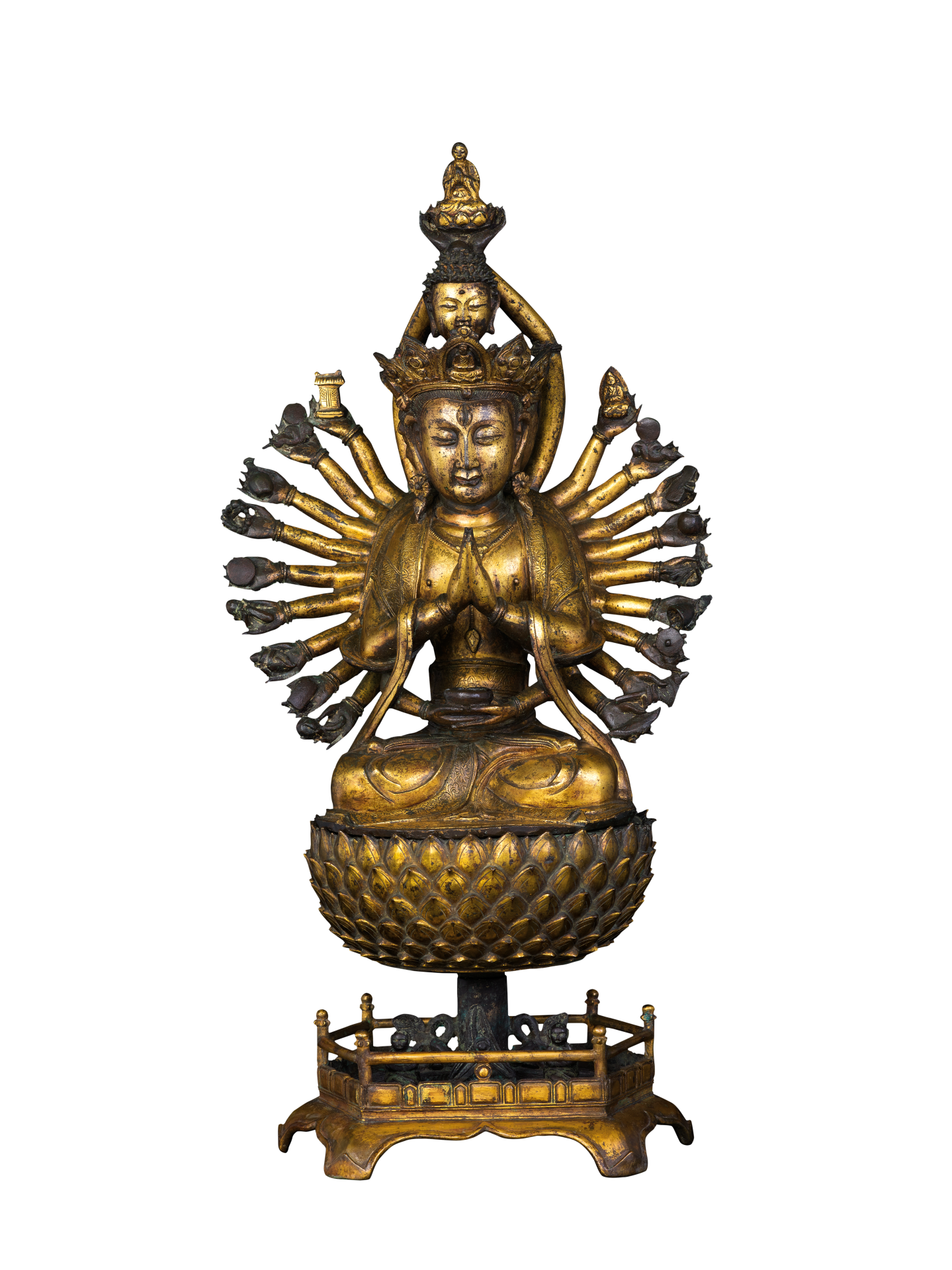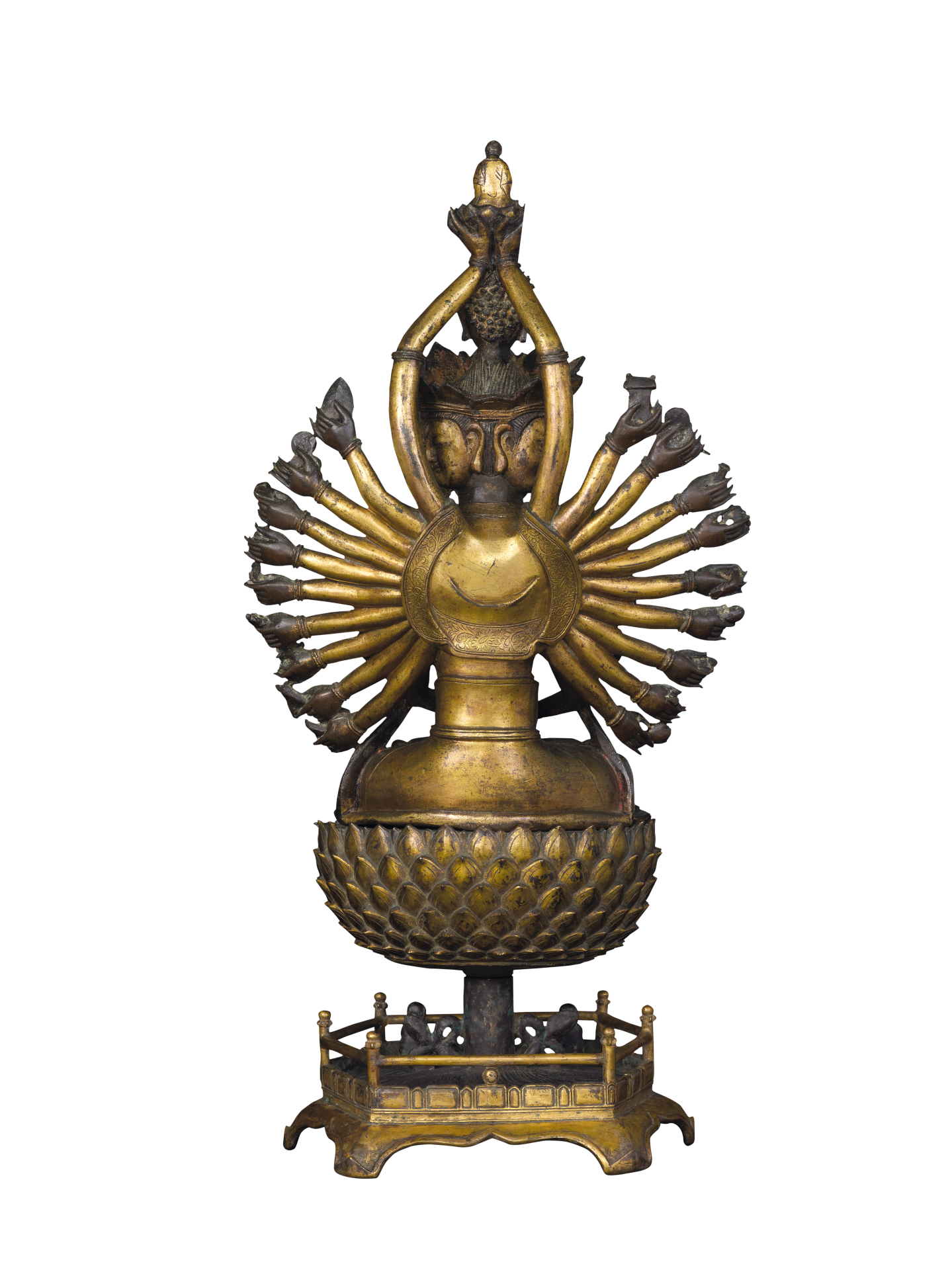Seated Twenty-Four-Armed Guanyin Bodhisattva
Amongst the vast collection of Buddhist canon, over 80 exoteric and esoteric texts, not including Chinese apocryphal works, are related to Bodhisattva Guanyin. Guanyin images of Tantric tradition are richly diverse in iconography. The majority are single-headed multi-armed or multi-headed. Each hand either displaying different sacred gesture or holding a different object. Not only are these gestures and objects effective in relieving the devotees from all kinds of disasters and giving the devotees great benefits, they are also invested with profound didactic meanings.
This 24 armed Guanyin has a triple-faced principal head with three eyes on each face. The frontal face and left face are peaceful ones, while the right face is a wrathful one with scowled eyebrows and fierce eyes. The principal head wears a five-leaf regal crown with an image of Amitābha Buddha in ‘meditation gesture’ at the front centre. This head is surmounted by another Buddha head. Except for the topmost pair of hands supporting the Amitābha Buddha image, and the pair of hands joining palms in front of the chest, the rest of the 24 hands are holding different objects including the sun, the moon, Amitābha Buddha image, pagoda, kuṇḍika bottle, prayer beads and alms bowl. The iconography is associated with the Tantric tradition.
Full of interesting details, this Guanyin statue has sharply articulated facial features, an upper body draped with a shawl and a beaded necklace with trifurcated strands terminated in leafy pendants. The lower body is wrapped in a long skirt. He is seated with legs locked in ‘lotus posture’ (padmāsana) on a separately cast pedestal in the form of a large lotus rising out of a parapeted plinth. The drapery is very simple. The garments’ borders are chiselled with luxurious floral and foliage motifs. This Bodhisattva also has a proportionately larger head, sloping round shoulders, a bulging chest, broad shoulders and a narrow waist. The ungilt upper surface of the hexagonal parapeted plinth is engraved with wave motifs, where the two miniature monk statuettes are seated on lotus thrones with hands in ‘meditation gesture’.

